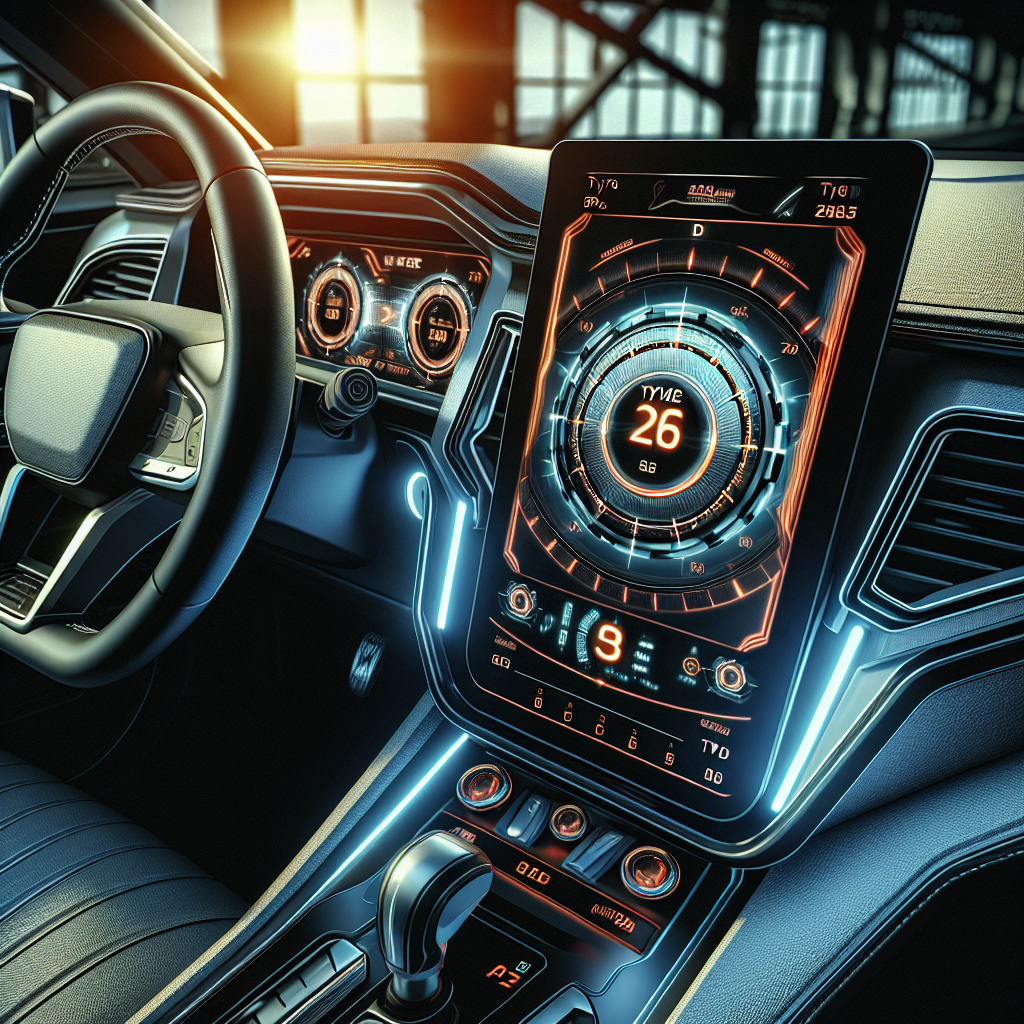The Tyre Pressure Monitoring System (TPMS) is an essential technology in modern vehicles and trailers that ensures optimal tyre performance and safety on the road. This system continuously monitors the air pressure within each tyre, alerting the driver if pressure falls below the recommended levels. Understanding how tyre pressure monitoring system works is crucial for anyone who tows trailers or operates vehicles, as it directly impacts fuel efficiency, tyre lifespan, and overall vehicle safety.
There are two main types of TPMS: direct TPMS and indirect TPMS. Direct TPMS uses sensors mounted inside each tyre to measure the air pressure and transmit that data to the vehicle's onboard computer. This system provides real-time, accurate readings and can immediately alert drivers to any discrepancies. On the other hand, indirect TPMS relies on the vehicle's ABS (Anti-lock Braking System) to measure wheel speed; a difference in speed between tyres can indicate a loss of pressure.
Benefits of using a TPMS include:
- Enhanced Safety: By providing early warnings of low tyre pressure, TPMS helps prevent blowouts and accidents.
- Improved Fuel Efficiency: Properly inflated tyres reduce rolling resistance, leading to better fuel economy.
- Increased Tyre Lifespan: Maintaining optimal pressure extends the life of your tyres, saving you money in the long run.
With a TPMS, you can tow with peace of mind, knowing that TrailerWatchdog is standing guard, monitoring your trailer's tyre pressure and ensuring your safety on every journey.
How Tyre Pressure Monitoring System Operates

The operation of a Tyre Pressure Monitoring System (TPMS) is a blend of advanced technology and practical application, designed to enhance vehicle safety and performance. At its core, the system consists of pressure sensors, a control unit, and a display interface, which work together to provide real-time data about tyre condition.
When a TPMS is installed, each tyre is equipped with a sensor that measures the air pressure and temperature. These sensors are typically located inside the tyre, securely mounted on the valve stem. The sensors continuously monitor the tyre's pressure and send this information wirelessly to the vehicle's onboard computer system.
Here's a brief overview of how the system operates:
- Data Collection: Each sensor collects data regarding the tyre's pressure and temperature. This data is crucial for detecting any anomalies.
- Wireless Transmission: The sensors transmit the collected data via radio frequency to the vehicle's central control unit. This communication occurs multiple times a minute, ensuring that the information is up-to-date.
- Real-time Monitoring: The control unit processes the incoming data, comparing it against predefined pressure thresholds. If any tyre pressure drops below the recommended level, the system triggers an alert for the driver.
- Driver Notification: The alert can take the form of a warning light on the dashboard or a message displayed on the vehicle's screen, prompting the driver to take action before a potential issue arises.
This proactive approach not only enhances safety but also empowers drivers to maintain their tyres effectively, ensuring a smoother and more efficient ride.
Key Components of Tyre Pressure Monitoring Systems

Understanding the key components of a Tyre Pressure Monitoring System (TPMS) is essential for appreciating its role in vehicle safety and performance. Each part of the system plays a significant role in ensuring accurate monitoring and effective communication. Here’s a breakdown of these critical components:
- Pressure Sensors: These are the heart of the TPMS. Each tyre is fitted with a sensor that measures the internal air pressure and, in many cases, the temperature. These sensors are designed to withstand harsh conditions, ensuring reliable performance over time.
- Wireless Transmitter: After collecting data, the sensors transmit this information wirelessly to the vehicle's central control unit. This component ensures that the data reaches the control unit without the need for cumbersome wiring.
- Control Unit: The control unit acts as the brain of the TPMS. It receives the data from the sensors, processes it, and establishes whether any tyre is underinflated or overinflated. It continuously monitors the pressure readings to ensure they remain within safe limits.
- Display Interface: This is the interface through which the driver receives information about tyre conditions. It can be a simple indicator light on the dashboard or a more advanced digital display that provides detailed information about each tyre's pressure and temperature.
- Battery: The sensors are typically powered by small batteries, which can last several years. However, some TPMS designs utilize energy harvesting technology to extend battery life by converting the motion of the tyre into electrical energy.
Each of these components works in harmony to provide a comprehensive monitoring solution, ensuring that drivers receive timely alerts about their tyre conditions. This level of awareness contributes significantly to vehicle safety and efficiency.
Benefits of Using Tyre Pressure Monitoring Systems

Incorporating a Tyre Pressure Monitoring System (TPMS) into your vehicle or trailer offers a multitude of advantages that enhance safety, performance, and cost-effectiveness. Here are some of the key benefits:
- Improved Safety: The foremost benefit of a TPMS is the significant increase in safety. By continuously monitoring tyre pressure, it helps prevent blowouts and accidents caused by under-inflated tyres, which are often more susceptible to failure.
- Enhanced Fuel Efficiency: Properly inflated tyres contribute to optimal fuel efficiency. A TPMS ensures that your tyres maintain the correct pressure, leading to reduced rolling resistance and lower fuel consumption, which can result in substantial savings over time.
- Extended Tyre Life: Maintaining the right tyre pressure not only improves safety but also enhances the lifespan of the tyres. A TPMS can help identify pressure issues promptly, allowing for timely corrections and reducing uneven wear.
- Real-Time Monitoring: With a TPMS, drivers receive real-time data about their tyre conditions, enabling them to make informed decisions while on the road. This immediate feedback can help in addressing potential issues before they escalate into serious problems.
- Environmental Benefits: By optimizing fuel efficiency and extending tyre life, TPMS contributes to lower carbon emissions. This is increasingly important as environmental concerns grow, making it a responsible choice for eco-conscious drivers.
In summary, the implementation of a Tyre Pressure Monitoring System provides not only practical benefits but also peace of mind for drivers, knowing that they are taking proactive steps to ensure their safety and the longevity of their vehicles.
Common Issues with Tyre Pressure Monitoring Systems

While Tyre Pressure Monitoring Systems (TPMS) offer numerous advantages, they are not without their challenges. Understanding the common issues associated with these systems can help users troubleshoot effectively and maintain optimal performance. Here are some prevalent problems:
- Sensor Malfunction: One of the most common issues is sensor failure. Sensors can become damaged due to impact, corrosion, or battery depletion, leading to inaccurate readings or complete system failure. Regular maintenance checks can help identify these issues early.
- Incorrect Calibration: TPMS systems need to be calibrated after tyre rotation or replacement. If not correctly calibrated, they can provide false readings, causing confusion and potential safety risks.
- Temperature Sensitivity: Tyre pressure is affected by temperature fluctuations. Extreme heat or cold can lead to pressure changes that may trigger warning lights even when tyres are properly inflated. Users should be aware of this and monitor their tyre pressure regularly.
- Compatibility Issues: When replacing tyres or sensors, ensuring compatibility with the existing TPMS is crucial. Incompatible components can cause the system to malfunction or not work at all, leading to potential safety concerns.
- Battery Life: Many TPMS sensors are powered by batteries that have a limited lifespan. When a sensor's battery dies, it can lead to loss of functionality. Keeping track of sensor battery life is essential for maintaining the effectiveness of the system.
By being aware of these common issues, users can take proactive steps to ensure their Tyre Pressure Monitoring Systems function effectively, enhancing the safety and efficiency of their vehicles.
Future Developments in Tyre Pressure Monitoring Technology
The future of Tyre Pressure Monitoring Technology is poised for significant advancements, driven by innovations in technology and growing demands for safety and efficiency. As vehicle manufacturers and technology developers collaborate, several exciting trends are emerging:
- Integration with IoT: The Internet of Things (IoT) is set to revolutionize TPMS. Future systems may integrate with other smart devices, allowing for real-time data sharing and enhanced functionalities. This could enable users to monitor tyre pressure from their smartphones, providing instant alerts and more accurate diagnostics.
- Advanced Sensors: Upcoming developments in sensor technology will likely yield more accurate and durable TPMS sensors. These sensors may feature self-calibration capabilities, reducing the need for manual adjustments and ensuring optimal performance over time.
- Predictive Analytics: Using big data and machine learning, future TPMS could analyze historical data to predict potential tyre failures before they occur. This proactive approach could significantly enhance safety and reduce maintenance costs.
- Expanded Monitoring: Future systems may extend beyond just tyre pressure to include other critical metrics such as tread depth, temperature, and overall tyre health. This comprehensive approach will provide a holistic view of tyre performance.
- Wireless Technology: Advances in wireless communication will likely lead to TPMS that require less wiring and installation complexity. This can facilitate easier upgrades and replacements, making smart trailers more accessible to a broader audience.
As these developments unfold, they will undoubtedly enhance the functionality and reliability of TPMS, contributing to safer roads and improved vehicle performance. Tow with peace of mind, knowing that trailerwatchdog is standing guard.








